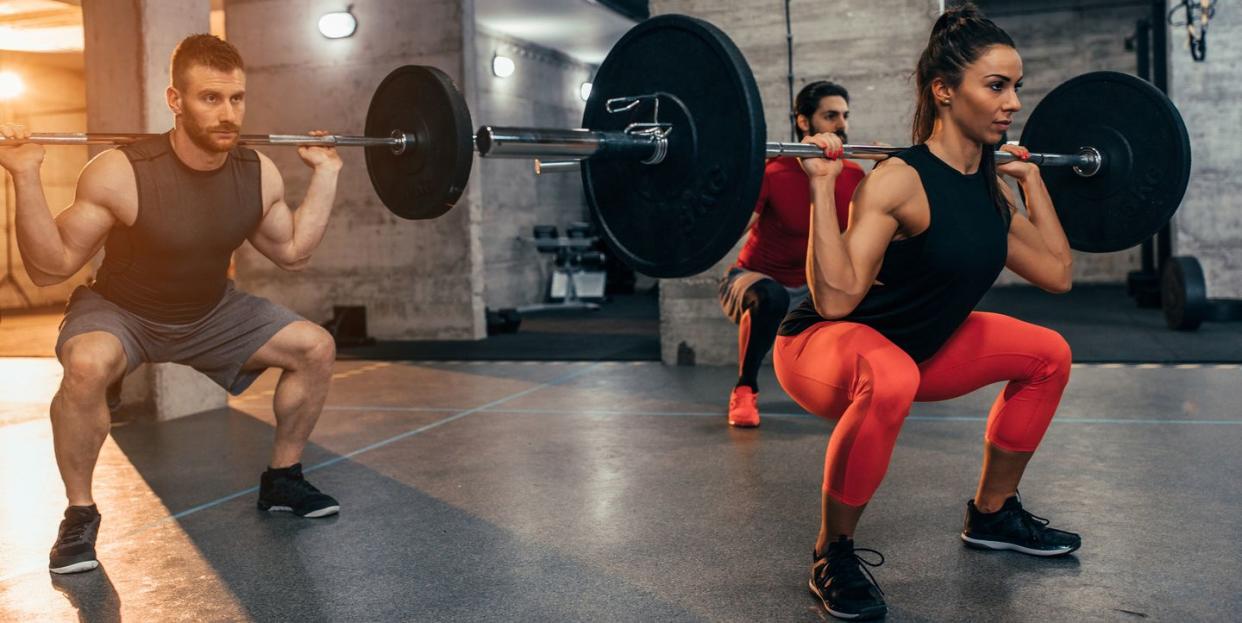Here’s What Loading Up on Vitamin D Does to Your Bones

According to a new study published in the Journal of the American Medical Association, consuming more than the recommended amount of vitamin D could actually decrease your bone density.
It’s unnecessary to consume more than 600 IU (international units) of vitamin D per day.
By now, we know that vitamin D is essential for building the strong, healthy bones we need in order to put in a solid workout. But, as the saying goes, you really can have too much of a good thing: According to new research published in the Journal of the American Medical Association, consuming more than the recommended amount of vitamin D—600 IU (international units)—could actually decrease your bone density.
In the study, 303 people (ages 55 to 70) consumed either 400, 4,000, or 10,000 IU of vitamin D in supplement form once a day over a three-year period. They also had their wrist and ankle bone strength and bone density measured at six, 12, 24, and 36 months, and their vitamin D and calcium levels measured at three, six, 12, 18, 24, 30, and 36 months.
Over the three years, bone mineral density (BMD) decreased by 1.4 percent in the group that consumed 400 IU per day, 2.6 percent in the group that consumed 4,000 IU per day, and 3.6 percent in the group that consumed 10,000 IU per day. (It’s worth noting that every group saw a slight decrease in bone mineral density because as we get older, our bones naturally start to decline in density.)
Translation? Contrary to what you might think, getting more than the recommended amount of vitamin D per day doesn’t do anything to strengthen your bones. Instead, it seems like it actually weakens them.
According to Steven Boyd, Ph.D., study coauthor and director of the McCaig Institute for Bone and Joint Health at the University of Calgary, the reason for the bone density loss might have to do with the fact that high doses of vitamin D were associated with an increase in a blood marker of bone breakdown and suppression of parathyroid hormone (PHT).
“PTH keeps your blood calcium at a normal level, and calcium is a mineral that helps strengthen your bones,” Boyd told Runner’s World. “PTH also stimulates normal bone maintenance—which is the removal of old bone and stimulation of new bone formation. So if there is increased bone breakdown combined with less PTH stimulation of bone maintenance, the net effect may be modest bone loss.”
[Build a killer midsection in the kitchen for effortless miles on the road with Eat for Abs!]
What does this all mean for athletes?
“Although sufficient vitamin D is important to maintain healthy bones, mechanical loading is also an important factor,” Boyd said. “The loads generated by walking and running are important because loading plays an important role in the cellular processes regulating bone maintenance.”
While your workout routine (riding and strength-training) can help guard against bone loss, your diet can help as well. To get a sufficient amount of vitamin D in your diet, look to foods like swordfish, salmon, tuna, milk, yogurt, eggs, and cheese. For instance, three ounces of cooked swordfish contains 566 IU of vitamin D and 3 ounces of cooked sockeye salmon contains 447 IU of vitamin D.
The bottom line: Ultimately, it’s unnecessary to consume any more vitamin D than what’s recommended (600 IU per day). Keep on eating a healthy diet rich in vitamin D, and continue with your weight-bearing workout routine, and you should be well on your way to healthy bones.
You Might Also Like